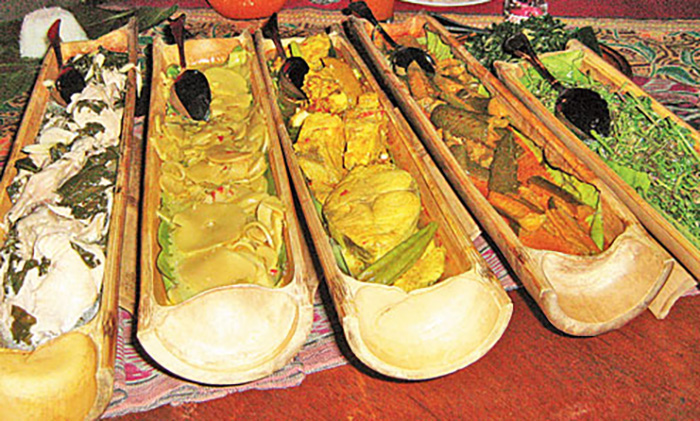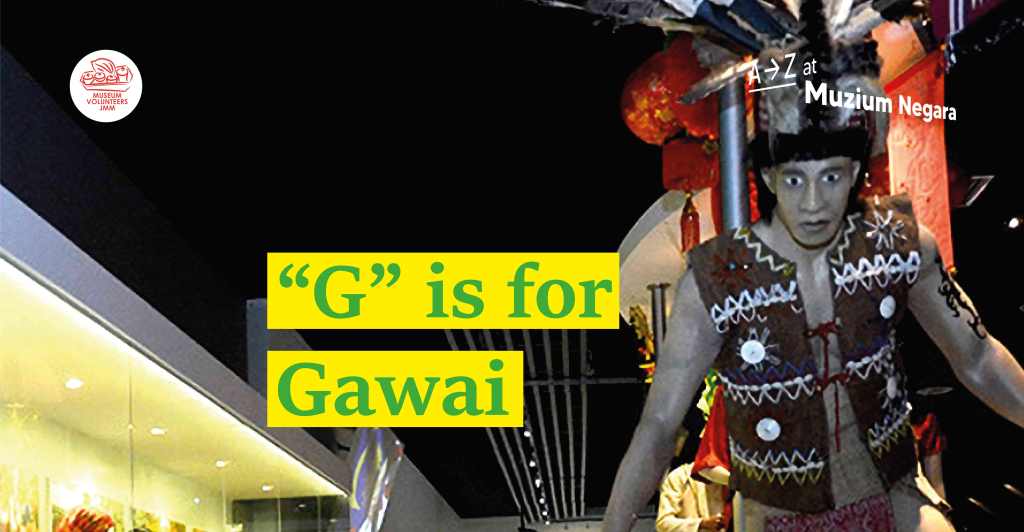by Casper Kaun
“Gawai, the harvest festival was and remains like Christmas and New Year’s rolled into one.”
Anthony Bourdain, while in Entulau Sawawak, 2015.
Gawai, or Gawai Dayak, is a major social and religious festival in Sarawak that is celebrated annually on the 1st of June. The late Anthony Bourdain summed up perfectly the importance of Gawai as he remarked, “Gawai is a big deal in the Iban calendar when friends and relatives return to the longhouse”. There are many variants of Gawai, though the widely celebrated one is the ‘harvest festival’ as the word ‘Gawai’ literally means festival. For the Ibans, Gawai is called Ari Gawai while for the Bidayuhs, in the Bidayuh language, it is called Andu Gawai. In 1965, the Sarawak Government decided to make Gawai Dayak as a public holiday. Gawai Dayak is widely celebrated among the Iban and Bidayuh people or colloquially known as Sea and Land Dayaks. Although it is celebrated in Sarawak, the festival is also celebrated by the Sarawakian diaspora abroad.

The preparation of Gawai begins days in advance as the main alcoholic beverage served for Gawai called tuak, takes days to be made. It is served during Gawai Eve and on the day itself. Tuak is a form of rice wine, unique amongst the Dayak people of Sarawak. It is sometimes prepared weeks or even a month in advance. Tuak is important during Gawai because for the Ibans, it is also known as ‘ai pengayu’ (aqua vitae), the water of longevity. Besides tuak, other snacks are prepared before the day itself, similar to how the Malays would prepare their kuih raya, weeks before Hari Raya. These snacks include kuih sarang semut, kuih sepit and even keropok (fish crackers). These snacks are kept in biscuit tins lined with newspaper to preserve them for the main day. In addition, days before Gawai, relatives from abroad would start travelling back to their hometowns. Throughout Sarawak, one can observe that the bus stations, airports and ferry terminal would be very crowded as people try to make their way back in time before Gawai.
The day before Gawai, known as Gawai Eve, is when families would host a large dinner gathering, almost similar to a Chinese New Year reunion dinner. This is a time for families to get together, have a good meal and to have a good time. The dishes served during the eve vary from family to family, though we can expect a plethora of Dayak dishes served on the table. In the rural kampongs however, there will most likely be a large gathering at the balai raya or community centre during Gawai Eve. Those attending would be dressed in their traditional attire and the sound of traditional music, played by gongs will fill the air. These gongs are usually ensembles of Engkerumong or Taboh (Iban) or Ogong (Bidayuh). These ensembles are similar to Javanese Gamelan ensembles. Tuak will be shared by the attendees and usually the celebration would be accompanied with traditional dances. This is when one can watch the Ngajat, a traditional Sarawakian Dayak dance, being performed. The celebration during this night will continue to the wee hours of the morning.

On the morning on Gawai day itself, the kitchen will be a very busy place as the folks will be busy preparing the delectable dishes to be served to the families and friends. The traditional dishes range from manok pansoh (bamboo chicken), lemang (glutinous rice wrapped in banana leaf cooked in coconut milk in a bamboo ), kasam ikan (fermented fish), pangkang (glutinous rice cooked in coconut milk in a bamboo but without the banana leaf wrapping), linut (sago porridge), kasam dihan (fermented durian), kasam pangan (fermented pork), midin (jungle shoots) and many more.

For Christian Dayaks, a Gawai prayer service is held at church in the morning. Usually during mid-day, this is where Gawai celebration kicks in as people would start visiting their relatives or neighbours’ homes. Food and drinks will be served. Normally people would spend an hour visiting their relatives. In the spirit of ‘open house’, friends would also visit each other’s homes as well to celebrate Gawai together. They would come either in their traditional dress or in their best attire. Visiting would last all day, as people would continue seeing their friends or relatives until nightfall.
In some villages, Gawai is celebrated with a mass procession that would march throughout the entire village. The procession is led by people in traditional dresses as they make their way through the village. Bystanders are welcome to join this procession as it is meant to create a long, human train. At certain points, they would be stopped by villagers on the roadside as they pass through their houses. The human train would be served with tuak or langkau as they carry on their journey. They are also accompanied with the sound of mobile gongs being played by the ensemble crew. Often, this procession would end at the border of the village, and by then, it will already be dusk.
Yearly, during Gawai, pageant competitions would be held. These pageants are called Kumang and Keling Gawai. Kumang is for females while Keling is the male variant. This is where those competing would be dressed in their traditional attire with other accoutrements to match. These accoutrements are usually family heirloom, which is passed down from father to son or mother to daughter. The competitors would be judged based on their outfit and their traditional dancing skills. The competition varies from village to village as each different ethnicity has different traditional outfits.

Traditionally, Gawai is celebrated throughout the month. These days, the festivities normally die down after 4 to 5 days though Gawai formally ends after the Ngiling Tikar ceremony, which may take place a week to a month after Gawai (depending on the village itself).
As Gawai is a big celebration in Sarawak, those celebrating will take between one to two weeks off from work to accommodate the lengthy travel time that might be required, and some to accommodate the lengthy festivities.
Though somewhat similar to celebrating Hari Raya or Chinese New Year, Gawai is a unique celebration on its own. It is celebrated by the Dayaks of Sarawak, regardless of religion, which makes part of the colourful tapestry of Malaysia.

In this Series
Click HERE for a list of articles in the A-Z at ‘Muzium Negara’ series.

